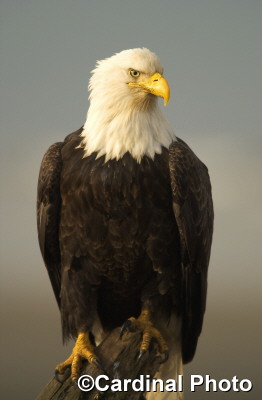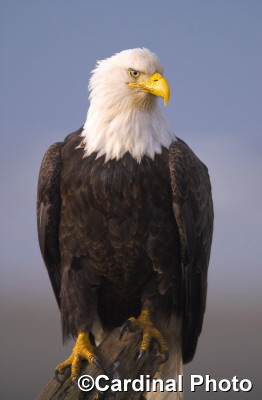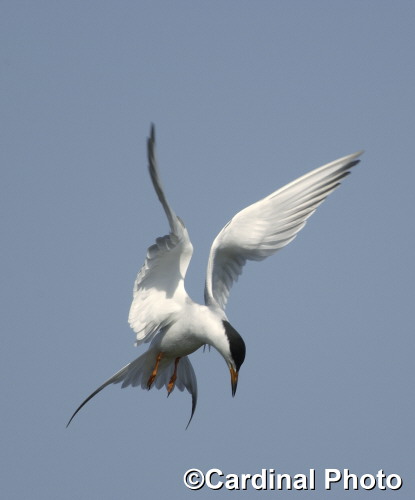DigitalPro Shooter Volume 2, Issue 7, March 24th, 2003
Welcome to DPS 2- 7. Judging by the mail we receive and the posts on many websites around the net,
choice of file formats is one of the hottest issues facing digital
photographers. But what are the real differences and how should you choose a
format to use? Too
many of the conversations on this topic turn into tirades by one side
promoting their point of view for a business or other selfish reason without
taking into account the needs of those listening.
In this issue we've pulled together for the first time a broad model of how
you can think about Raw and JPEG and some rules of thumb for making the choice.
We'll also bust some of the myths about file formats.
Raw vs. JPEG: Style or Substance?
The very first thing to know about Raw, TIFF, and JPEG is that if you have a
pro quality D-SLR (this includes at least the Canon D60, 10D, 1D, 1Ds and the
Nikon D100, D1, D1X and D1H) you can take high-quality publishable photographs
in any of the 3 file formats (although you'll want to be using the highest
quality settings and highest resolution available for whichever format you
choose). All D-SLRs have hundreds of
dollars worth of electronics--that you paid for--which are dedicated to taking
the raw sensor data and turning it into a useable finished image in a fraction
of a second. This is probably the most remarkable miracle of modern digital
camera technology. If your camera vendor claims you need to shoot Raw format to
get the best quality from their camera, ask them if that means you've wasted $500 or more paying
for all those extra circuit boards to do in camera image processing:-) Or if
they don't have confidence in their own camera to produce a finished image.
Frankly, its just as likely that they have a vested interest in locking you in
to their proprietary file format and image processing software system. We'll
come back to the quality issue, but first we'll look at the broader issue of
shooting Raw vs. JPEG.
If we clear away all the computer jargon the Raw vs. JPEG discussion is
really the same as one that has been going on in photography for decades.
Basically it has to do with when your photograph is finished. Any one who shot
chromes, particularly for editorial submission or projection, was used to the
image being complete at the moment the shutter was pressed. As long as the light
was within the range of the film and the metering was set the way you wanted,
the photo was finished. If you needed to print a slide you could send it off to a lab
and the lab tech worked to
match the chrome. By contrast, many photographers who shot with negative film were used to an
extended creative process that might involve hours in the darkroom working to
finish the image that they started in the camera. The greater latitude and
resulting lower
gamma (contrast) of negative film meant that an extra creative step was needed to print the
final image. And since negatives can't be viewed directly there wasn't any
single "right" way to visualize the image contained on a negative. Obviously the
most famous example of the importance of printing were the many famous Ansel Adams images that were of
only passing interest until reprinted many years later in a way that caught the
viewer's attention.
Today we are witnessing a replay of this same phenomenon with digital.
Depending on your job requirements or your style, you may work to create the
image in the camera. If so, then the camera's extensive image processing
circuitry is your best friend. It'll will turn the light you capture into a
finished and viewable image practically before you let up on the shutter. Just
as with chromes, your image is complete and ready to use. Of course this
assumes you've got the lighting, exposure and white balance just the way you
want them before you press the shutter. On the other hand, if you think of the
scene in front of you as the raw material and yearn for the time you spent
performing your special magic in the darkroom then Raw files give you back that
same flexibility. You can remap the 12-bits of information captured by the
camera into the final 8-bits needed for output. You can change the white balance
to your heart's content and you can even alter the exposure by several stops
without ruining the image. You can do some of that with JPEGs, but not as well
or as extensively.
If everyone was willing to just leave the choice at that life would be fairly
simple. Raw files allow you to create a digital darkroom and fulfill your
creative yearnings at the computer while JPEGs complete the image at the time of
capture and recreate the freeing feeling of chromes when your image is finished at the
time you click the shutter. But in the interests of selling seminars or
software, or just promoting their workflow there is a steady siren's song that
claims you need to shoot Raw files to get the most from your camera. Frankly,
that's bunk. Sure, if you live in the world of numbers, there is good, solid
math that shows you can tweak more decimal points out of a Raw file after the
fact. That 2GHz Pentium and enough of your time can do a technically superior
job when compared to the VLSI in the camera and the 100 milliseconds it has to
do its work. But that comparison completely ignores your skill as a photographer, your needs
as a working pro, and the value of your time. If you are familiar with your
subject and the lighting conditions, you can often capture the image so that it
can be directly processed into a JPEG without losing anything you wanted it to
communicate. And if you are paid to produce
quality images, the increased size of Raw images and the increased processing
time required will decrease your productivity. That's fine if you need Raw
images to create your final result, but if you don't then Raw files are just slowing you
down. Finally, your time. If you enjoy working with your images, just like you
enjoyed working in the darkroom, then great. But if not, then let the camera you
paid all that money for do the work rather than making you do it! If you can
live with the larger file size, Canon's Raw+JPEG option is a very creative
approach to providing the best of both worlds. Kodak's ERI format is as well.
Nikon's attempt to emulate this capability by adding JPEG creation for Raw files
in Capture is nice in theory but defeats the entire point of having the image
finished in the camera by requiring the purchase and use of their software to
create the JPEG. (Note: Unfortunately with the Canon 10D, it appears that
special software support is now needed to extract the JPEG image from the
Raw+JPEG file. This removes much of the advantage of having the JPEG there in
the first place.)
 |
This image of a Bald Eagle
works as is, shot with a
White Balance of 6510K.
If I'd wanted the Eagle
to look as if it was in
front of a perfect blue sky
I could have shot with
a lower color temperature
setting.
|
 |
But since the image is a NEF file
I can easily change the White Balance
after the fact in Adobe Camera Raw
to create the classic blue sky
look if I change my mind later.
The image isn't any better as a result,
but I do have more freedom
to make choices "in the darkroom"
instead of just behind the camera. |
Okay, so by now you're saying, "But I heard that you need to shoot Raw to get
the best images". Let's talk about that in more detail. The first thing you've
probably been told is that Raw files are 12-bits and JPEG files are 8-bits so
they're "better". However that is apples vs. oranges. The 12-bit CCD is a linear
encoding of light. Each of the 4096 levels represents an equal number of
photons. The human visual system's response to light isn't linear though. Humans
are sensitive to percentage changes in
light, not absolute changes. So at the high end of the 4096 values there is "too
much" information (the brightest stop of light is represented by 2048 separate
values, from 2048 to 4095) while at the low end of the 4096 values there is "too little"
information (the darkest stop of light is represented by only 2 values, 1 and 2!). Nikon
itself uses this fact to create visually lossless compressed NEFs. The
compressed NEF format uses just over 500 values (a little over 9-bits) to encode all the data in
a NEF file by spreading the values out in a way that more accurately reflects
the sensitivity of the human eye. The camera uses a tone curve (essentially a
modified gamma curve) to push that a
little further, into an 8-bit (256-value) encoding. Sure there is some small
loss of mathematical detail, but if the tone curve is the right one for the image and you
don't need to move the exposure after the fact you'll be hard pressed to see the
difference. And since essentially every output device in common use is 8-bits or
less per color,
your software is going to need to do convert the image to 8-bits per color at
some point in any case. The only
advantage of doing it on the computer is that you can change your mind or
re-purpose the image after the fact by doing it several different ways.
A very similar argument is also heard about JPEG compression. There is a
gnawing fear that somehow because JPEG is a "lossy" compression algorithm you'll
be throwing away that vital pixel. The truth is that modern JPEG
compression--when used with the High quality settings found in modern D-SLRs or
Photoshop--is essentially visually lossless if used only once or twice on an
image. There is a detailed comparison of different levels of compression and how
they specifically affect pixel values in the D100 and D1 Generation Update eBook if you're interested in the gory
details. There is no question that by forcing the choice of exposure, tone
curve, and white balance at the time of capture JPEGs limit your options to
change your mind after the fact--just like slide film did. But that doesn't mean
that slides aren't as good as negatives or that JPEGs aren't as good as Raw
files. It means you need to decide on your goals for your photography and about
which format fits your shooting needs and style.
 |
By shooting JPEG I can capture a higher percentage of split
second action shots like this Forster's Tern hovering while it looks for
fish.
And by setting the exposure and white balance right when I capture
the image I don't have to do any work in the darkroom to get the final image
I want. |
For me personally, the decision is normally easy. I spend too much time in
the office or on the computer as it is. I'd rather invest my effort in learning
how to capture the image the way I want it when I press the shutter than in
perfecting my digital darkroom technique. And photographing wildlife brings in a
whole other dimension. The constant activity of the subject means that JPEG
offers the substantial advantage of letting me capture more of the action more
of the time. Any image I capture is of course better quality than one I don't!
But, in case you think we don't spend enough time with Raw files to truly
appreciate their beauty, in the process of creating DigitalPro my co-developers
and I have shot and built decoders and viewers for over a dozen different
variants of Nikon and Canon Raw file formats, so we a solid understanding of
what those file formats offer and how D-SLRs and computer software alike render
them into completed images.
But, as my daughter says, "Make your own opinion". There are as many opinions
out there as there are photographers, but only yours matters. What's important
is that you have confidence in your ability, your equipment and your workflow to
help you produce the images you need when you need them. Have fun and good
shooting!--David
We'd love to hear your opinion, as well as what format or formats you shoot
and how they help you creatively and in your business. Please join us on the
DigitalPro forums and let us know!
DigitalPro Tip of the Week
Several of our readers have pointed out that the D1X and D1H don't always
write out images in the order they were shot. So if you need to sort your images
in exactly the order you took them, you can use the File rename feature of
DigitalPro to rename by shooting time (down to the sub-second, so each image is
unique) and then sort your images by name.
DigitalPro2 Preview 4 available
Preview4 of DigitalPro2 is now available. With this release DigitalPro2 is
now functionally complete. The final release will be out shortly with some
additional bug fixes and performance enhancements.


